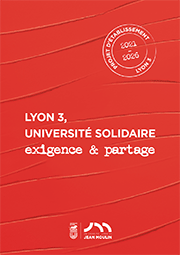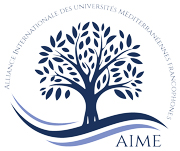AccueilRechercheProgrammes et productions scientifiquesThèsesThèses soutenuesThèses soutenues - 2006-2021Thèses soutenues - 2021
-
Partager cette page
- Recherche,
- Philosophie,
BARON Nicolas
Les animaux face à la rage. Une histoire du c?té des bêtes (France, fin XVIIIe – fin XXe siècle).
Publié le 24 mars 2021 – Mis à jour le 24 mars 2021
Thèse en Sciences Sociales, soutenue le 13 janvier 2021.
En adoptant "le point de vue animal" théorisé par Eric Baratay et en croisant l'histoire avec l'éthologie et les sciences vétérinaires, cette thèse vise à reconstituer le vécu des animaux face à la rage en France de la fin du XVIIIe siècle et la fin du XXe siècle. Touchés par le virus rabique dans des proportions inégales, les différentes espèces animales (loup, renard, chien, chat, animaux de ferme et de laboratoire...) manifestent des troubles spectaculaires, en particulier une agressivité anormale, et subissent des mesures très diverses décidées par les humains (mutilations, vaccination, extermination...). Face à la maladie et aux pratiques antirabiques, les animaux ne restent pas sans réagir et les multiples modalités de résistance qu'ils mettent en oeuvre témoignent d'une véritable agentivité animale.
Mots-clés : Animal – Rage – France contemporaine - Santé animale - Point de vue animal – Agentivité animale - ?thologie – Vétérinaire.
During the twentieth century, the Dordogne River (southwest of France) has recorded in its middle reach, several morphological changes, due to different human pressures (dams gravel minings and bank protections). To evaluate and quantify the unit and cumulative effects of these pressures, historical data (old maps, aerial photographs, longitudinal bed profiles, cross-sections, LiDAR survey, flow series) and in situ measurements (grain size analysis, fine sedimentation and bedload transport monitoring) were collected and analysed. Historical data show a decrease of potentially critical discharge frequency, a general trend towards riverbed incision and active channel narrowing. Field data (bedload transport, sediment input and storage) provide additional information to establish a sediment budget, to assess transport capacity and to separate and hierarch the role of each factor. The sediment budget assessment emphasizes an upstream deficit due to dams and a second, more generalized induced by mining, and whose effects persist due to the hydrological regulation of the dams By assuming ? the animal point of view ? developed by Eric Baratay and by crossing history with ethology and veterinary, this thesis aims at retracing the experience of the animals in front of rabies in France from the end of the eighteenth century to the end of the twentieth century. Unequally affected by the rabies virus, the different animal species (wolf, fox, dog, cat, farm animals, laboratory animals...) show impressive troubles, like abnormal aggressiveness, and undergo measures decided by the humans (mutilations, vaccination, extermination...). In front of the illness and of the humans actions, the animals react and resist, which are evidences of the animal agency.
Mots-clés : Animal – Rage – France contemporaine - Santé animale - Point de vue animal – Agentivité animale - ?thologie – Vétérinaire.
Keywords : Animal – Rabies – contemporary France - Animal health – Animal point of view – Animal agency - Ethology – Veterinary.
Directeur de thèse : Eric BARATAY
Membres du jury :
- M. Eric BARATAY, Directeur de thèse, Professeur des universités, Université Jean Moulin Lyon 3,
- M. Alain BOISSY, Rapporteur, Directeur de recherche, INRAE Clermont-Ferrand,
- Mme Anne CAROL, Rapporteure, Professeure des université, Aix Marseille Université,
- M. Jean-Marc MORICEAU, Professeur des universités, Université de Caen Normandie,
- Mme Isabelle PARMENTIER, Professeure, Université de Namur, Belgique,
- Mme Véronique SERVAIS, Professeure, Université de liège, Belgique.
Président du jury : Jean-Marc MORICEAU
Documentation
Mise à jour : 24 mars 2021







